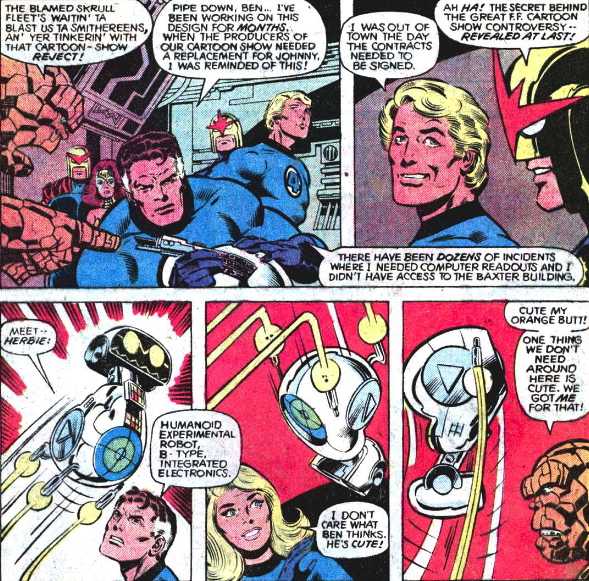
Two top tens for the price of one this time around, focusing on Marvin Arthur Wolfman, a man who made a huge impact on comic books not only as a creator but also as an editor. He was responsible for making Marvel vampires—and Dracula—cool. He created the best-selling DC comic of the 1980s, which spawned multiple spin-offs and, ultimately, one of the greatest cartoons of all time (Titans Go!). He created dozens of characters who have made millions of dollars for their corporate owners (and one of the two top tens here will be of his best creations).
As for his non-writing influence on pop culture, his horror fanzine was one of the first places a young writer named Stephen King ever got published. Alongside Len Wein, he helped steer the ship at Marvel, serving as Editor-in-Chief after Roy Thomas gave up the gig. Corporate leadership wasn’t something he wanted, and he left the job pretty soon after—stating that Marvel didn’t have his back on some of his decisions—but he immediately went over to DC and found even greater success…Until he spoke out in public against DC’s policy for rating its comics, when he was fired.
He was also a crusader for creators’ rights and creative freedom. He stuck up for creators and creative decisions while at Marvel, which eventually led to him being so frustrated that he quit—paving the way for corporate yes man Jim Shooter. He sued Marvel for ownership of Blade (he lost). Here’s a bizarre story: According to Marv, in 1974 he was mentioned as a storyteller in a DC horror comic and referred to as “wandering Wolfman.” The comics code authority didn’t approve of books about wolfmen, so they forced DC to clearly credit Marv as a person—so people would know it was his last name, and not a reference to a monster. From then on, writers got credits in DC comics. (Marvel had already been giving writers credits for years—it was part of what made Marvel different.)
In short, he’s a true legend of the comic book world.
And, he’s from Brooklyn.
And his birthday is May 13! Happy birthday!
Let’s begin with…
THE TOP 10 CHARACTERS CREATED BY MARV WOLFMAN
Marv had long runs on Spider-Man, Tomb of Dracula, the Fantastic Four, several Bat-titles, and, of course, The New Teen Titans. So you can imagine that he created way too many memorable characters to include in one list. Some were gimmicks (Big Wheel, e.g.), and others fell a bit flat (Vigilante was warmed-over Punisher), but so many of them were terrific.

THE ONES THAT DIDN’T MAKE MY LIST. In addition to the ten below, you might be surprised to know that Wolfman created these famous characters: Dracula (or at least the Marvel version, complete with a whole legend built around him); the whole Crisis on Infinite Earths crew (Harbinger, Monitor, Anti-Monitor, and Alexander Luthor); the H.I.V.E.; Brother Blood; Jericho; Night Force; and Destiny, who would ultimately become part of Neil Gaiman’s work at Vertigo. He also cocreated the Nightwing design for Dick Grayson and turned Kid Flash into Flash. Not really creations of characters, but certainly major changes to them.
Oh, and a little guy named Nova, who appears in the Ultimate Spider-Man cartoon and has had several runs of his own solo comic.
10. THE FEARSOME FIVE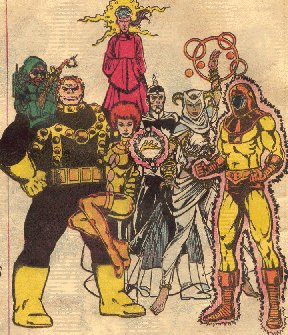
Marv and George Perez introduced this team of supervillains in New Teen Titans #3. Gizmo, a little person with technoskills, was the perfect villain for Cyborg. Jinx’s bad luck magic countered Raven. Mammoth could hold his own against Beast Boy. Evil genius Psimon could compete with Robin. And Dr. Light’s blasts could take out Starfire. And by including this team, I actually get to include four Wolfman creations—him and George invented all of them except for Dr. Light. Sneaky, huh? (Note: Wolfman did create the female Dr. Light, Kimiyo Hoshi.)

9. TERRAX THE TAMER
My favorite Galactus herald. Yes, I dig him more than Silver Surfer. ‘Cause he’s got that cool axe.

8. BLADE
The rare example of a character who has worked better in movies than comics, there’s still something about him that screams potential. Nobody has ever really been able to turn the character into something more than a bit player, but I think all we’re waiting for is the right creator with the right idea.
7. TIM DRAKE
Named after Tim Burton, Drake was the first fanboy to successfully become a superhero.
6. CYBORG
Not only did Marv create many female characters who had staying power, but he also created two famous African Americans. There’s probably a handful of comic creators who can say they did that. Not only that, but Wolfman tried to create DC’s first black character way back in the 1970s, but editor Carmine Infantino nixed the idea. Incidentally, the character would have been named Jericho—the same name as a character later introduced in The New Teen Titans. Wolfman also created two characters named The Protector: One for Marvel, one for DC.
5. STARFIRE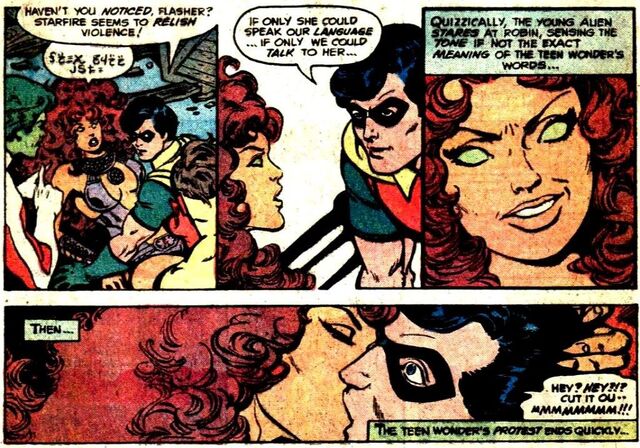
Sexy, naive, fun-loving, powerful, and she learns through kissing. Starfire was the perfect partner for Dick Grayson, who formed the Titans to get out from under the wing of the ultra-serious Batman. Plus, Starfire brought us Blackfire. And then Blackfire, and the story of the solar sisters’ homeworld, brought us The Omega Men. All Marv Wolman and George Perez creations.
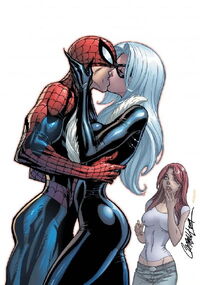
4. THE BLACK CAT
Wolfman’s characterization of the Cat was never spot on, but there’s no denying that the “girl who had a crush on Spider-Man” became an important, influential character in the Marvel Universe. Plus, she’s female. Not too many female creations stick around in comics.
3. DEATHSTROKE THE TERMINATOR
The coolest eye-patch character in comics (yes, cooler than Nick Fury), the inspiration for Deadpool, and all around badass. Plus, his real name—Slade Wilson—is just as cool as his codename. Deathstroke is the villain that Taskmaster should have been but never really became. Wolfman also created several characters who orbit around Deathstroke, like his daughter Rose “Ravager” Wilson and the ultimate double agent, Terra.
2. BULLSEYE
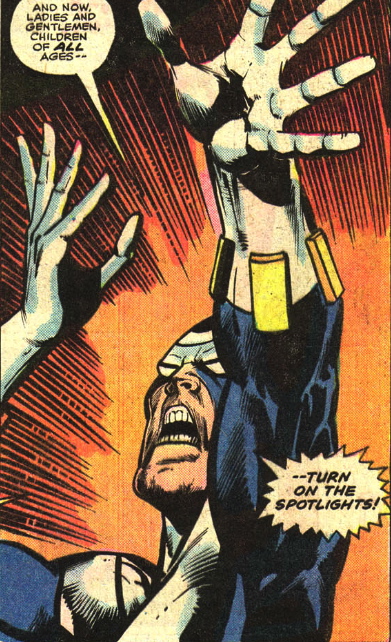
He started out as gimmicky villain who used giant crossbows to try to shoot Daredevil into the sky, but he instantly resonated with fans, and eventually became the definitive Daredevil villain.
1. RAVEN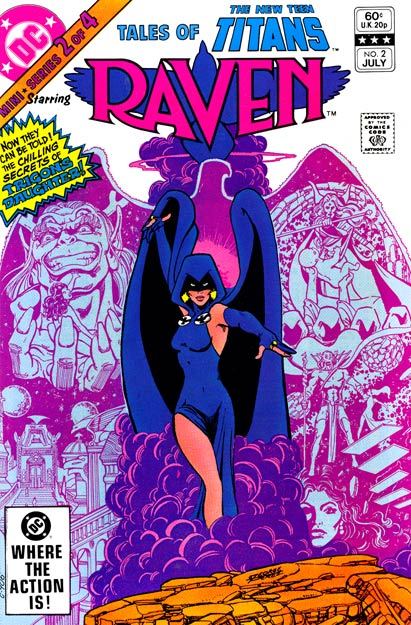
The most complex of Wolfman’s creations. The daughter of the demonic Trigon (also a Wolfman creation). The assembler of The New Teen Titans. I love this character but, like Blade, I haven’t really loved most of the versions of her that appear in comics—Wolfman seems to be the only guy who can really write her.
Now, on to …
THE TOP 5 MARV WOLFMAN COMICS
10. THE FANTASTIC FOUR #206-214
I didn’t love these in my regular posts on them, but as I was going over Wolfman’s run to research this post, they seemed to have improved since I last read them. Reading them as an arc, rather than as part of a retrospective of the entire F4 series, I can see how masterfully Wolfman folds in threads from his (cancelled) book Nova, prior Skrull wars, intergalactic politics, Galactus, the Inhumans…All the big cosmic stuff that make the Fantastic Four unique. Plus, it marked the first appearances of Terrax the Tamer and H.E.R.B.I.E. the robot. The Humanoid Experimental Robot, B-Type, Integrated Electronics robot was created by Reed to replace Human Torch on the F4 cartoon, a real cartoon that appeared on NBC and couldn’t feature Human Torch because of contests to the rights to the character’s name. How meta!
Also: The first John Byrne FF art. Not too shabby.
Runner Up: Spider-Woman #1

No, the writing on this issue is not brilliant—but this makes my list for how well it reimagines and redesigns a d-list character. Jessica Drew is a Marv Wolfman creation, and this issue was popular enough to springboard into a series that went on for over five years and attracted talents like Chris Claremont and Frank Miller. Creating new characters is hard. Launching successful new comics was also hard (but not as hard in the 1970s and ‘80s as now). Launching a new, female-focused solo series? Almost impossible.
A side note: Yes, I included Spider-Woman but nothing from Marv’s long run on Spider-Man. That’s because it sucked. Marv is the guy who turned the burglar who shot Uncle Ben into a career criminal who buried gold in Aunt May’s house, turning the Spider-Man legend on its head. The whole point was that if Spider-Man had intervened in a random crime, he could have protected those closest to him—so he needs to act responsibly all the time, never knowing when it will matter. After The Amazing Spider-Man #200, the random element was taken out. No, the “burglar” story wasn’t terrible—it was the best part of Marv’s run—but it wasn’t very good.
Also: Nothing from his generic take on Daredevil, which was relatively early in Marv’s career—before he found his voice.
5. Tomb of Dracula #7-30 (or so)
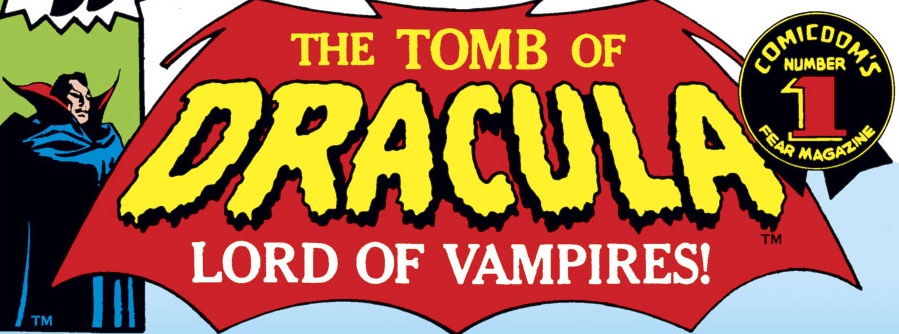
Marv Wolfman started writing Tomb of Dracula with issue #7 (and it’s really important NOT to read issues #1-6 because they suck), and, along with Gene Colan, he immediately went about creating a fascinating universe of supporting characters and themes. His first storyline lasted about a half a year and introduced Dracula’s daughter and Blade the Vampire Slayer. The series ran for over 70 issues, but lost steam in the mid-1970s. During these issues, though it crossed over with Werewolf By Night, it was mostly a self-contained book. This made it stand out in the interconnected crowd of Marvel titles. In issue #44, it crossed over with Dr. Strange, and at that point it was already showing signs of wear. Like Dark Shadows, it’s hard to put a pin on any particular arcs or pick exactly when it went off the rails, but all of these early issues were very, very cool.
4. New Teen Titans #23-25, Annual #1
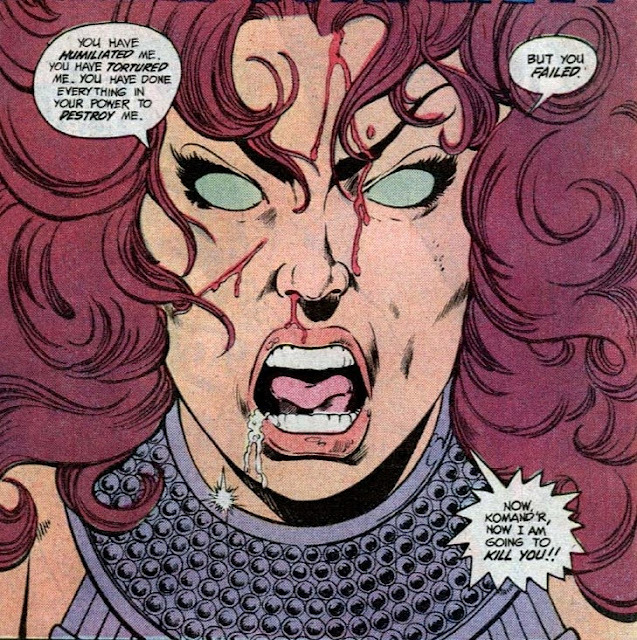
Let’s face it: Probably all of this list could have been taken up by New Teen Titans stories, but wanted to show some of Wolfman’s breadth. To fit others on the list, I had to the trial of Deathstroke the Terminator, that amazing done-in-one where the original Starfire serves as a human chemical weapon against the U.S., and probably four or five other stories that I absolutely adore.
But these issues, which introduce Blackfire and led to a glossy spin-off book for The Omega Men, are some of the best in their run. It’s an all-out space epic—and the panels of a bound Starfire being tortured by Blackfire made it impossible for me to stand up. If you know what I mean.
3. Crisis on Infinite Earths
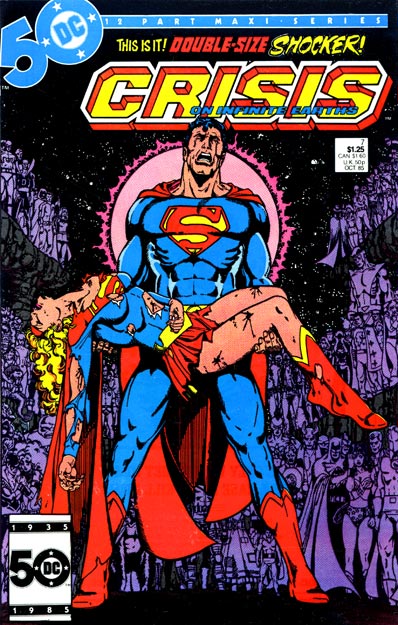
The first DC event, a 1985 12-issue miniseries with regular Wolfman collaborator George Perez, and the first time DC tried to “reboot” its universe by killing off many popular characters, getting rid of the multiverse (or at least confining it), and depowering characters like Superman.
I still find the story itself a little hard to follow—I’m that way with big space epics, they always confuse me—but what’s perhaps most impressive about Crisis is how well Marv handles writing so many characters. None of them get lost. None seem to appear just for face-time. All of them contribute in a unique way. Plus, he created several big cosmic villains for this book. It’s the rare example of an event that was better than most of the other books on the stands during its run.
2. A Lonely Place of Dying (Batman 440-442/New Teen Titans 60-61)
The Batman/Teen Titans crossover that marked the first appearance of Tim Drake not only served as a platform for one of the more interesting Bat-characters, but featured some great character work with Alfred and gave new insights into Dick Grayson’s role as a mentor to other heroes. In fact, it almost serves as a template for some of Grant Morrison’s work when Grayson assumed the Batman cowl.
1. The New Teen Titans #39, Tales of the Teen Titans #42-44, Annual #3
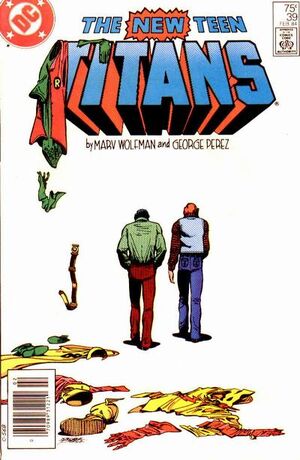
No, issue #39 is not included in the many trade paperback versions of this storyline—but it should be. In #39, Terra and Terminator face off in a public (staged) battle in order to remove any doubt that she is a true Titan (she isn’t). But this issue also is the one where Kid Flash quits and then, immediately after, Robin resigns his yellow cape. He says he can’t keep living in Batman’s shadow, and needs to forge his own identity, which he doesn’t do for several issues. Great build up, great suspense. It’s also a great setup for a betrayal story: A founding member leaves, and the team’s leader is conflicted. It’s the perfect time for Deathstroke to strike.
Wolfman was hired by DC to create a book that would serve as DC’s X-Men: Soapy, young, and full of drama and flash. Instead, he created a team with a unique creative vision and voice, and told a long, decompressed story of betrayal that’s better than any other. Terra was a true Trojan Horse—a powerful orphan who needed the kind of guidance that the Titans wanted to provide; she allowed Beast Boy to feel romantic, and she let the other members of the team take on parental/mentoring roles—especially resonant in light of Grayson not wanting to continue to serve as Batman’s sidekick.
This is a very layered story, with wonderful characterizations and a heartbreaking conclusion. It’s easily Wolfman’s best work. This is one of the best comics of the 1980s, period.

